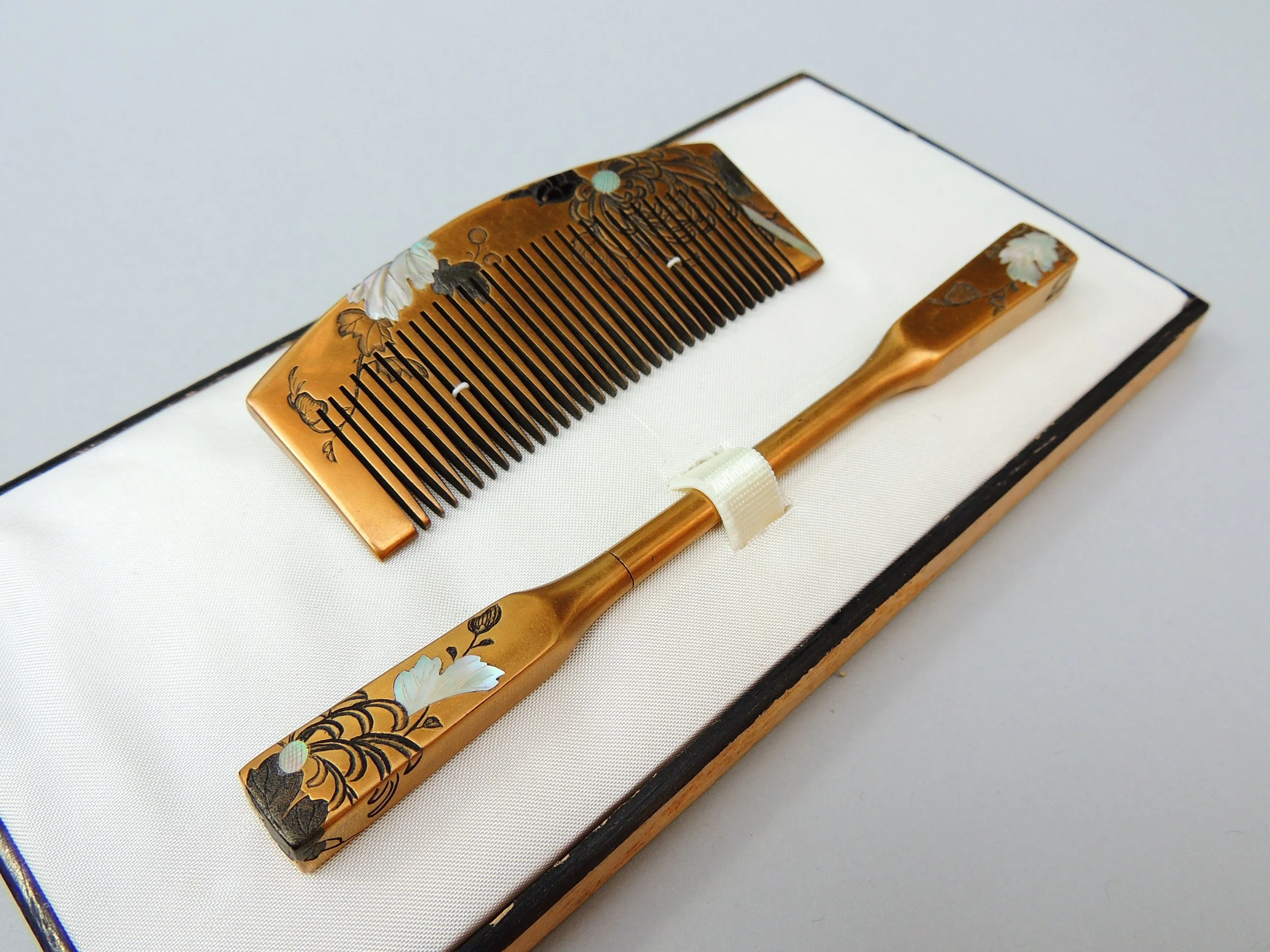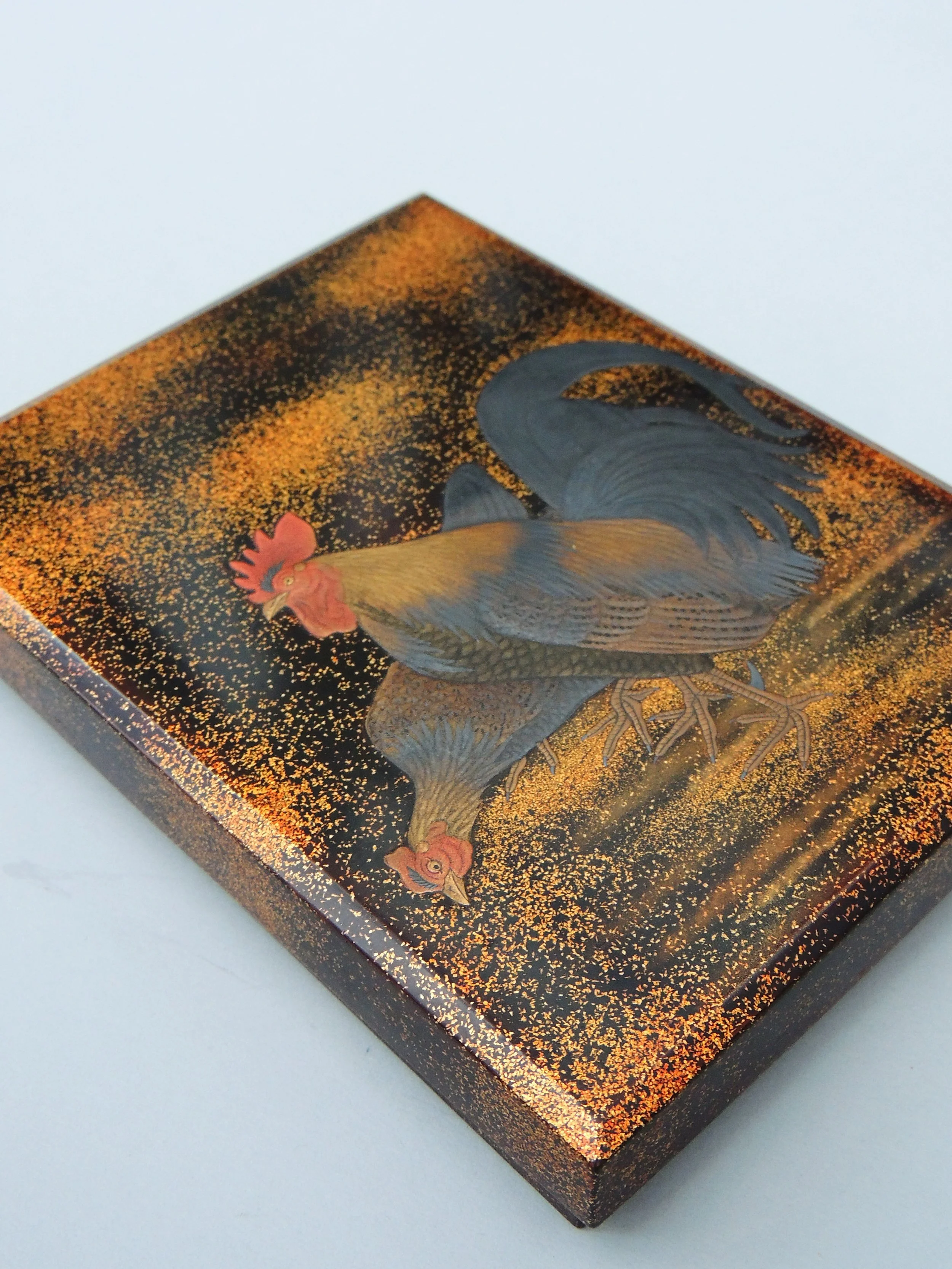Anonymous
Edo period, 18/19th century
1615-1868
Kuro-dana Cabinet
This very rare kuro-dana cabinet in the official lacquer design of the Tokugawa family decorated in peonies and arabesques with scattered aoi crests in gold and silver takamakie on a black roiro ground. Solid silver mounts and decorated inner doors of civilians in takamakie and nashiji. This cabinet would have been from a marriage set of two large cabinets and many other items such as cups, bowls, ceremonial incense implements, writing boxes, and so on. normally given by the father who would have commissioned it for his child’s birth in order to have it ready for the occasion in time.
Unsigned
770mm x 700mm x 390mm
Abroham Follett Osler esq
The cabinet was supposedly owned by a kuge “court noble” Konoe San of the Tokugawa family, it was shipped by a Mr Frank Major Osaka to Birmingham on the 13th of October 1877 by steamboat.
The owner of the cabinet in Birmingham was Abraham Follett Osler Esq (1808 to 1903) who was a pioneer in the measurement of meteorological and chronological data. He wanted to improve accurate local time and so built an astronomical clock outside the Birmingham Philosophical Institution in Canon Street. After some time this was synchronized by telegraph to Greenwich Mean Time. The clock was transferred to the Birmingham and Midland Institute after the closing of the BPI in 1852.
In 1883 he gifted the clock and bells for 'Big Brum', located in the clock tower of the new art gallery.
He also ran the family's glass manufacturing company in Broad St which displayed the world's first glass fountain in the Great Exhibition of 1851 at the Crystal Palace. Perhaps the most striking object in the Exhibition. The lightness and beauty, as well as the perfect novelty of its design, have rendered it the theme of admiration with all visitors.’
Glass fountain at the Great Exhibitionof 1851










